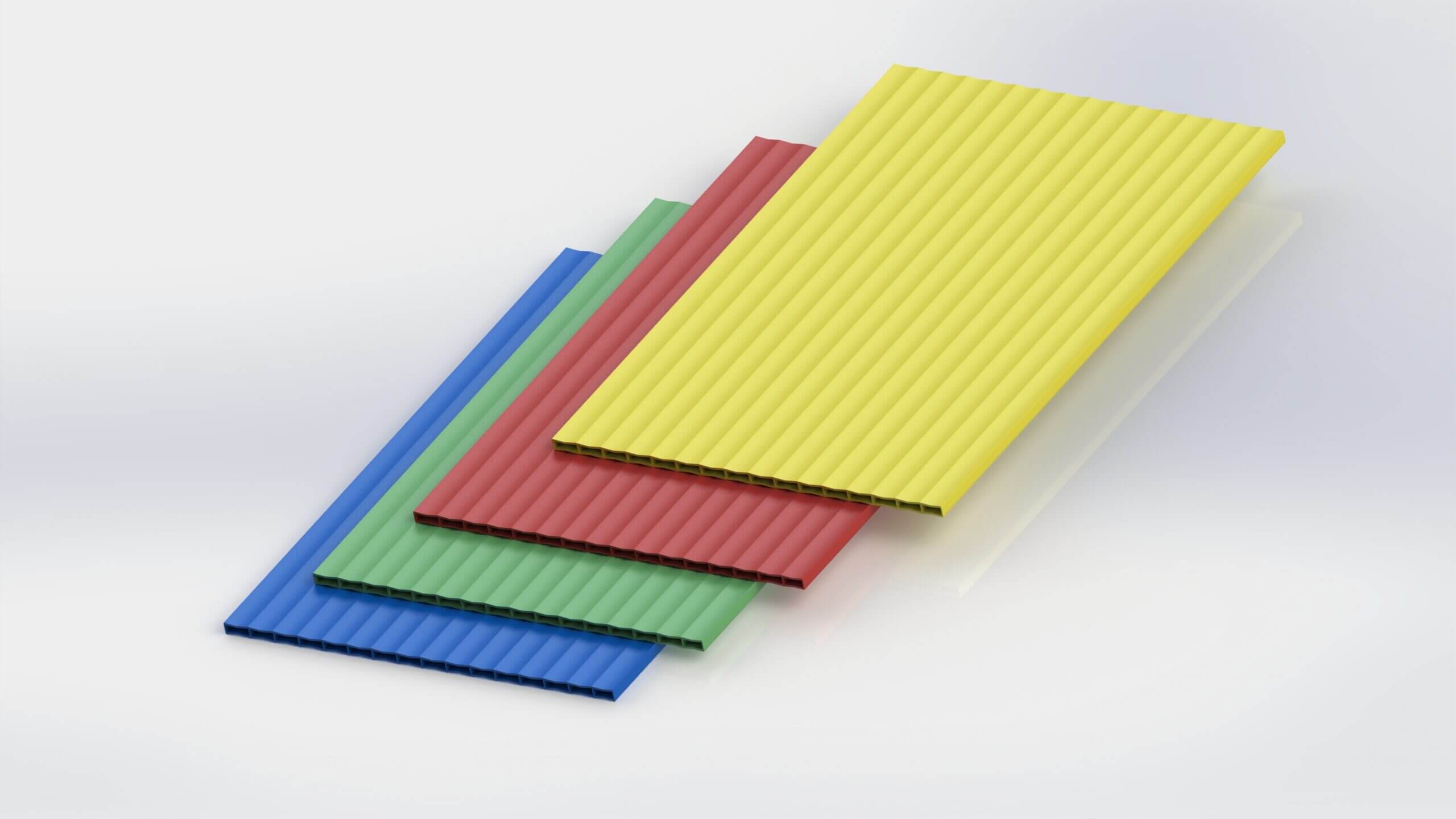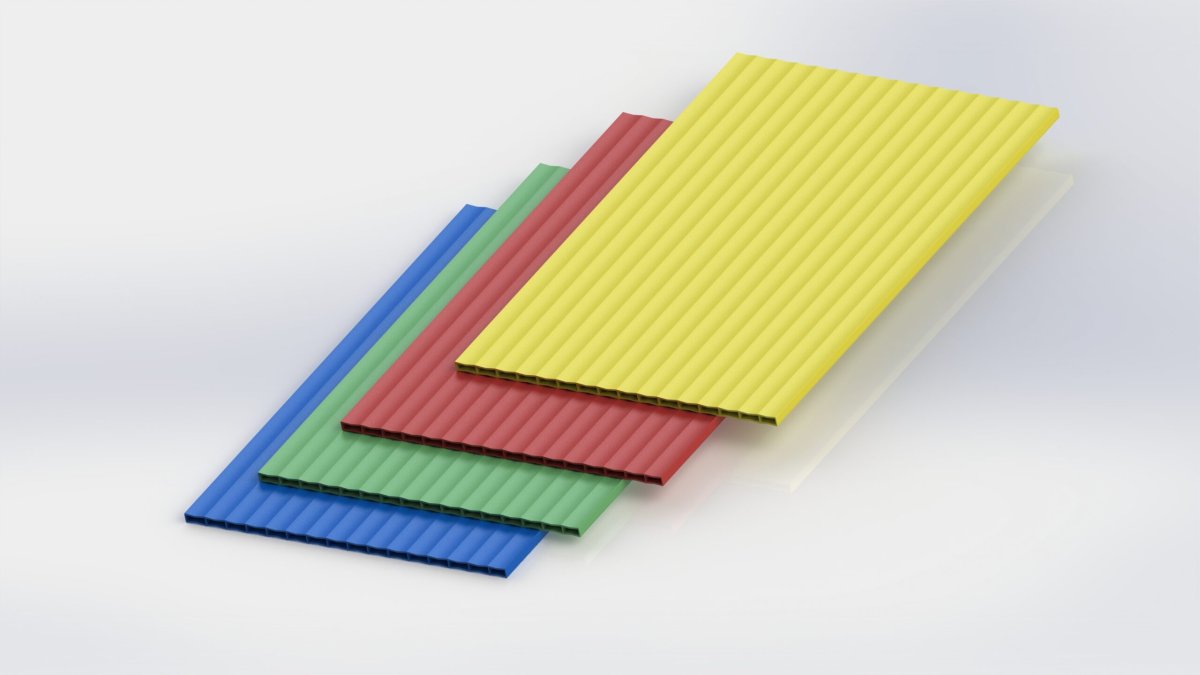
From roofing to construction, signage to packaging, leveraging the advantages of corrugated PVC sheets can bring significant benefits and cost savings to any project. This article will explore the various advantages of corrugated PVC sheets and how businesses can maximise their potential to achieve superior results. Whether you are a contractor, architect, or business owner, understanding this innovative material’s power can revolutionise how you approach your projects and propel your success to new heights. Join us as we delve into the world of corrugated PVC sheets and unlock the unlimited possibilities that await.
A Comprehensive Review of Corrugated PVC Sheets
Corrugated PVC sheets have long been recognised as a versatile and reliable building material due to their unique properties. One of their key advantages is durability, as they can withstand extreme weather conditions and resist damage over time. This makes them an excellent choice for roofing and construction projects where longevity is crucial.
Corrugated PVC sheets offer flexibility, allowing easy manipulation and installation. This flexibility enables them to adapt to different shapes and sizes, making them highly suitable for intricate designs and architectural projects. Their easily cut and shaped ability contributes to their versatility and usability.
Another advantage of corrugated PVC sheets is their weather resistance. Whether heavy rain, strong winds, or UV radiation, these sheets can withstand the elements without deteriorating or losing their aesthetic appeal. This makes them ideal for outdoor signage, packaging, and other applications where exposure to harsh environmental conditions is expected.
Businesses can leverage the advantages of corrugated PVC sheets to achieve cost savings and superior results. Contractors and architects, in particular, can benefit from these sheets by incorporating them into their projects to enhance durability, versatility, and weather resistance. By maximising the potential of corrugated PVC sheets, businesses can ensure the long-term success of their projects while minimising maintenance and replacement costs.
Creative Uses for Corrugated PVC Sheets
Corrugated PVC sheets offer a myriad of creative uses beyond their traditional applications. With their lightweight nature and ease of handling, these sheets can be utilised innovatively to enhance a project’s functional and aesthetic aspects. One imaginative use for corrugated PVC sheets is in creating artistic installations and sculptures. Their ability to bend, twist, and cut easily allows artists to transform these sheets into stunning works of art that can be displayed indoors and outdoors.
Another creative use for corrugated PVC sheets is designing and constructing furniture and interior partitions. The durability and flexibility of these sheets make them a practical choice for creating unique and custom-made pieces. From sleek and modern tables to decorative room dividers, the versatility of corrugated PVC sheets allows for endless design possibilities. Additionally, the weather resistance of these sheets makes them suitable for outdoor furniture, such as garden benches or patio chairs, which can withstand various weather conditions without deteriorating.
Corrugated PVC sheets have proven incredibly adaptable material with numerous creative uses. Their durability, flexibility, and weather resistance make them an excellent choice for artists, designers, and builders looking to push the boundaries of their projects. From artistic installations to functional furniture, leveraging the advantages of corrugated PVC sheets opens up possibilities for those seeking superior results.
Maintaining Corrugated PVC Sheets
Maintaining corrugated PVC sheets, commonly used for roofing and siding, is essential to ensure longevity and performance. Here are some steps to effectively maintain corrugated PVC sheets:
- Regular Cleaning: Periodically clean the corrugated PVC sheets to remove dust, dirt, and debris. Use a mild detergent or a specialised PVC cleaner mixed with water. Avoid abrasive cleaning materials, such as steel wool or stiff brushes, as they can scratch the surface.
- Pressure Washing: Consider using a pressure washer if the PVC sheets have stubborn stains or algae/mildew growth. Use a low-pressure setting (around 1,500-2,000 psi) to prevent PVC damage. Ensure you maintain a safe distance and use a wide-angle nozzle to avoid concentrated pressure on a specific spot.
- Algae and Mildew Removal: A mixture of water and household bleach (1 part bleach to 3 parts water) can be effective if you notice algae or mildew on the PVC sheets. Apply the solution, let it sit briefly, and then rinse thoroughly with clean water.
- Inspect for Damage: Regularly inspect the corrugated PVC sheets for any signs of damage, such as cracks, holes, or loose fasteners. Address any issues promptly to prevent water infiltration and further damage.
- Avoid Abrasive Materials: When cleaning or removing debris, avoid using abrasive materials like metal scrapers or wire brushes, as they can scratch and damage the surface of the PVC sheets.
- Trim Overhanging Branches: If trees are near the PVC sheets, trim overhanging branches to prevent leaves, twigs, and other debris from accumulating on the roof or siding.
- Check Seals and Fasteners: If your corrugated PVC sheets are used for roofing, check the seals and fasteners regularly. Ensure that any sealant or caulking is in good condition, and tighten loose fasteners to prevent leaks.
- Snow Removal: In areas with heavy snowfall, use a roof rake to remove excessive snow buildup to prevent roof structure overload safely.
- UV Protection: Some PVC sheets come with UV protection coatings. Check the manufacturer’s recommendations for maintaining UV protection and apply any recommended treatments as needed.
- Ventilation: Ensure proper ventilation in areas where PVC sheets are installed, especially in roofing applications. Good ventilation can help reduce heat buildup, prolonging the PVC’s life.
- Repairs: Address any damage promptly. Repair or replace damaged sheets, seals, or fasteners to prevent water leaks and maintain structural integrity.
Remember to consult the manufacturer’s guidelines and recommendations for specific maintenance procedures, as they may vary depending on the type and brand of corrugated PVC sheets you use. Proper maintenance can help extend the lifespan of these materials and keep them looking and performing their best for years to come.
Steven Bennett
Related posts
Stay connected
Today's pick
- Things to Remember While Designing Your Custom Modular Kitchen in GurgaonGurgaon now known as Gurugram is the second largest city in the state of Haryana and is a reflectiossn of an ideal modern city with futuristic goals. Witnessing rapid urbanization, it has also emerged as a hub for contemporary homes, with homeowners seeking innovative and... The post Things to Remember While Designing Your Custom Modular […]

